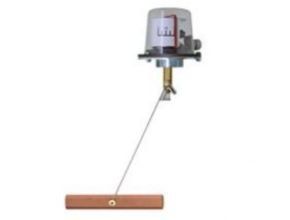Description
TC Fluid Control Magnetostrictive sensors are used for the high-accuracy, continuous level measurement of liquids and are based on determining the position of a magnetic float according to the magnetostrictive measuring principle.
TC Fluid Control Magnetostrictive Applications
- High-accuracy level measurement for almost all liquid media
- Chemical industry, petrochemical industry, natural gas, offshore, shipbuilding, machine building, power generating equipment, power stations
- Process water and drinking water treatment, food and beverage industry, pharmaceutical industry
Features
- Process and system-specific solutions possible
- Operating limits: Operating temperature: T = -90 … +400 °C, Working pressure: P = Vacuum to 100 bar, Limit S. G.: ? ? 400 kg/m3
- Resolution < 0.1 mm
- Wide variety of different electrical connections, process connections and materials
- Explosion-protected versions
- Large scope of application due to the simple, proven functional principle
- Process connection, guide tube and float from stainless steel 1.4571, 1.4435, 1.4539 or plastic
- For harsh operating conditions, long service life
- Continuous measurement of levels, independent of physical and chemical changes of the media such as: Foaming, conductivity, dielectric constant, pressure, vacuum, temperature, vapours, condensation, bubble formation, boiling effects, density change
- Signal transmission over long distances
- Simple installation and commissioning, onetime calibration only, no recalibration
- Level displayed proportional to volume or height
- Parallel measurement of interface layer and overall level possible via HART® interface
TC Fluid Control Magnetostrictive Options
- Customised solutions
- Process connection, guide tube material and float from special steel, titanium, Hastelloy (others on request)
- In combination with limit switch, stepless setting of the limit values over the entire measuring range
Design and operating principle
- The measuring process is triggered by a current impulse. This current produces a circular magnetic field (3) along a wire (1) made of magnetostrictive material fixed in the guide
- At the point being measured (liquid level) there is a float with permanent magnets (4) acting as a position
- The interaction of both magnetic fields generates a mechanical torsion wave (5) in the
- This is converted into an electrical signal at the end of the wire in the sensor housing (2) by a piezoceramic converter.
- The measured propagation delay enables the origination point, and thus the float position, to be determined with high
Model Overview
| Sensor model | Description | Materials | Temperature range | |||||
| Stainless steel Stainless steel Titanium 1.4571 (316Ti) 1.4404 (316L) 3.7035 | Stainless steel PP 1.4435 (316L) | PVDF (process) | ||||||
| (grade 2) | ||||||||
| FLM-S | Magnetostrictive sensor, standard | x | x | x | -60 … +185 °C | |||
| FLM-ST | Magnetostrictive sensor, | x | x | x | -90 … +400 °C | |||
| high temperature | ||||||||
| FLM-SP | Magnetostrictive sensor, | x | x | -10 … +100 °C | ||||
| plastic | ||||||||
| FLM-H | Magnetostrictive sensor, | x | x | -40 … +400 °C | ||||
| sterile version | ||||||||
| Sensor model | Approval | |||||||
| without Ex i | Ex d | NEPSI | NEPSI | 3A | ||||
| Ex d | nL | |||||||
| FLM-S | x | x | x | x | x | |||
| FLM-H | x | x | ||||||
Ex approvals
| Explosion | Ignition protection | Model | Zone | Approval number protection Type |
| ATEX | Ex i | FLM-ST-Ex i | Zone 0 | IBExU 02 ATEX 1124 X II 1/2G Ex ia IIC T3 … T6 |
| Ex i | FLM-S-Ex i | Zone 0 | ZELM 10 ATEX 0439 II 1/2G Ex ia IIC T3 … T6 | |
| Ex d | FLM-S-Ex d | Zone 1 | ZELM 13 ATEX 0508 X II 1/2G Ex d IIB T3 to T6 Ga Gb | |
| NEPSI Ex d | FLM-S-Ex d | Zone 1 | GYJ101053 Ex d II CT3-T6 | |
| NEPSI nL | FLM-S-Ex i | Zone 1 | – |
Type approval
| Explosion protection | Model | Approval number |
| GOST | FLM-S | 0959333 |
| 3A | FLM-H | 3-A Sanitary Standards 74-06 |
Download Datasheet: TC Fluid Control Magnetostrictive Level Sensor
Reference: tc-fluidcontrol.com
Other Article:
- TC Fluid Controls Magnetostrictive Transmitter
- TC Fluid Control Level Sensor
- TC Fluid Control Magnetic Level Gauges
- TC Fluid Control Instrument Chambers
- AGP Mid Range Ultrasonic Level Sensor With Data Logging: 30 Feet IRU-6429
- Parker JF-32 Level Switch
- Liquid Level Indicator 92302 Shand & Jurs
- Delavan Captrol Integral 500 Point Level Measurement
- APG PWS Series Mini Level Paddle Wheel Switch
- APG FS-410 Series Stainless Steel Vertical Float Switch





